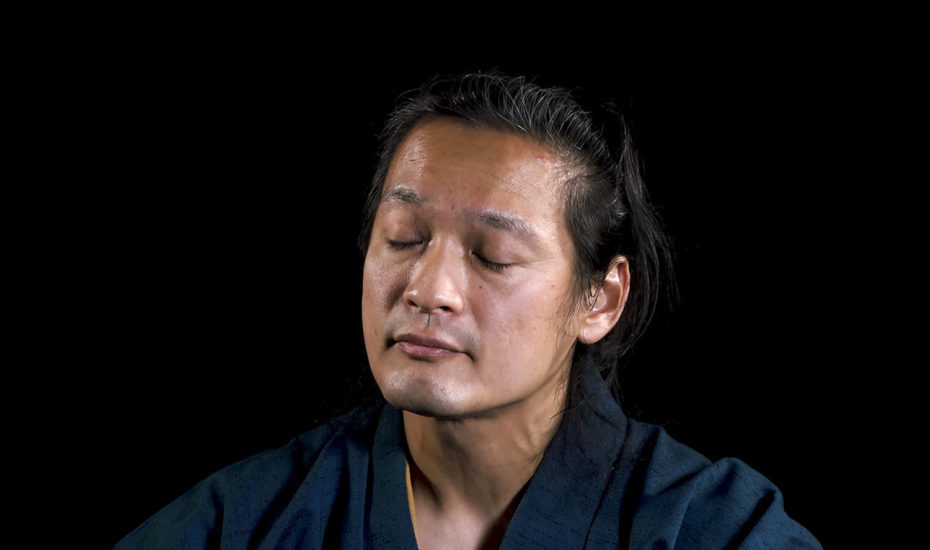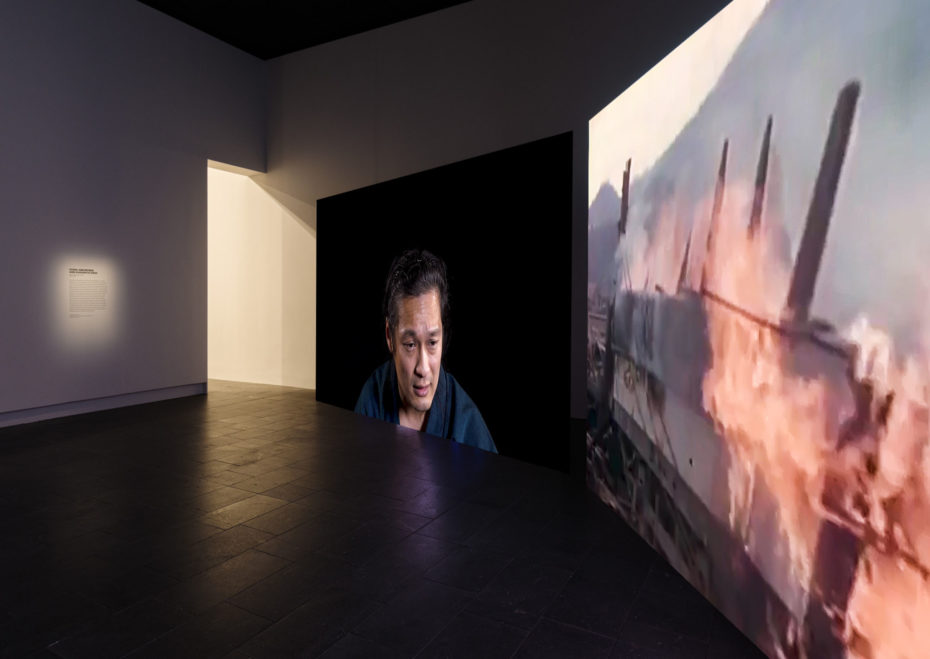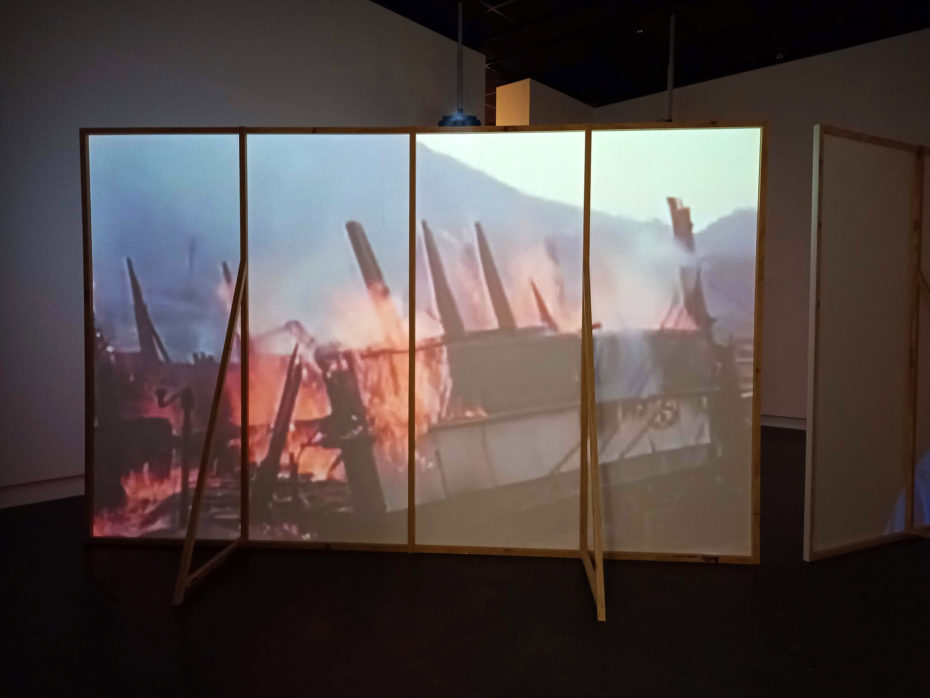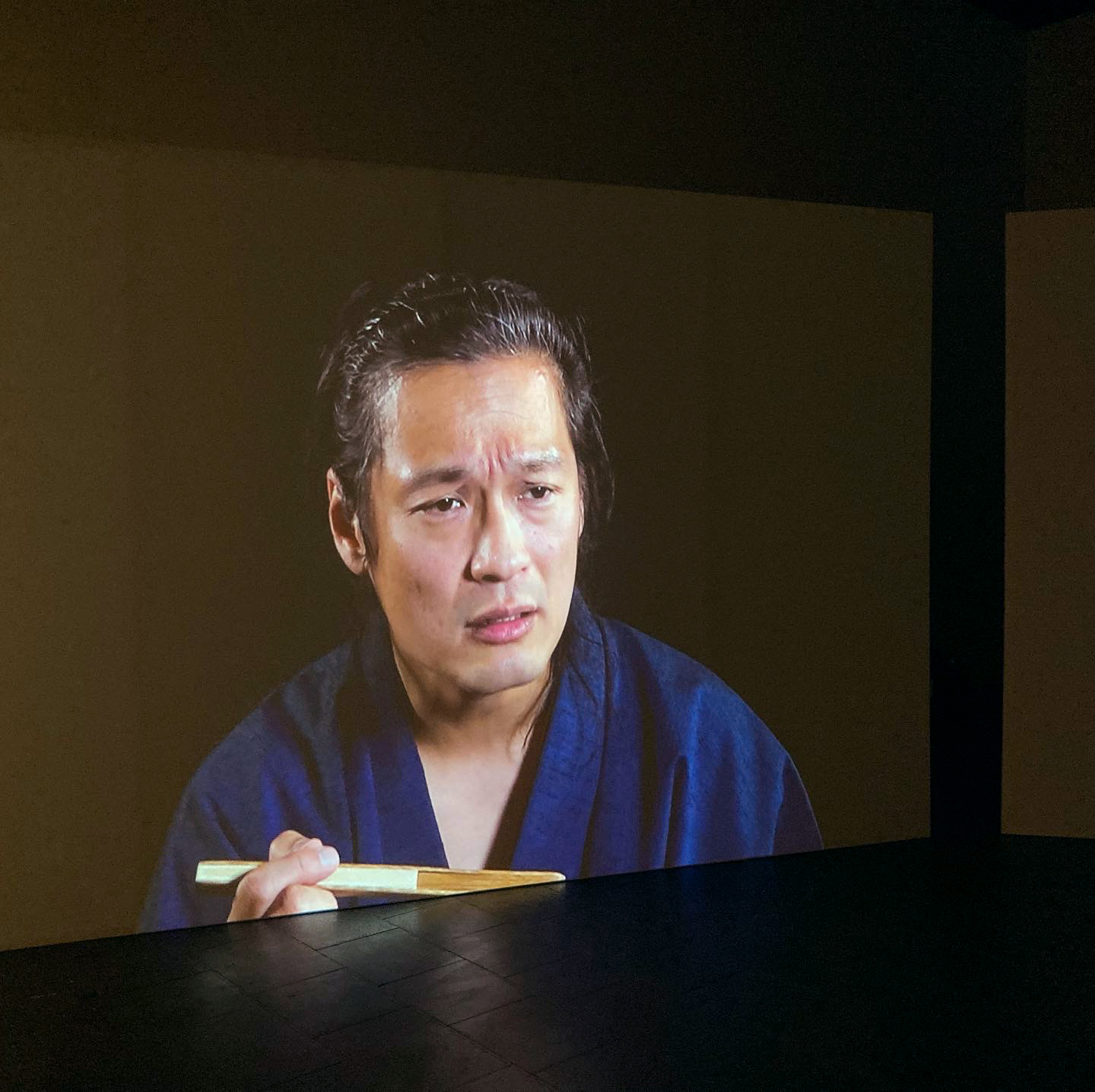An Ordinary Life
(Collaboration with Kanariya Eishi)
An Ordinary Life is an experimental two channel documentary that explores how to remember the WWII atomic bombings of Hiroshima and Nagasaki. While the Japanese and American Imperial war contexts that resulted in the bombings are long over, their impact remains present via those who survived and live the remnants of this history, as well as present-day nuclear-armed states. An Ordinary Life connects with this history as a means of exploring transformative methods for socio-ethical remembering.
The film is influenced by the Japanese practice of rakugo, which is a mode of storytelling that involves performing a narrative through limited props and gestures. Due to the spartan form of rakugo, the role of listening and imagination are highlighted. Although rakugo is traditionally aligned with comedy, its origins are linked to kamishibai, which is a form of storytelling that communicates stories with moral/ethical undertones. An Ordinary Life references these origins by drawing on rakugo methods to establish a discursive yet caring space where words, memories, and histories associated with the atomic bombings ethically live on in the present. In the context of An Ordinary Life, rakugo functions as a powerful critique of Japanese and American war histories and of contemporary, globally reaching, forms of nationalism.
An Ordinary Life works with American military produced footage of the bomb’s radiant heat and light—known as ‘flash-burns’—effects on Hiroshima and Nagasaki. This footage documents the permanent shadows that were created by objects and bodies who were exposed to the bomb’s intense flash and high temperatures. This imagery is suggestive of the invisible radiation that poisoned the people, animals, lands and infrastructure of both cities.
These relationships between invisibility and visibility are further explored in the film’s narrative. A rakugo performer (Kanariya Eishi) performs a dialogue between himself and his now dead grandfather who was a boy during the Nagasaki bombing. The difference between each character is depicted by Kanariya changing the pitch of his voice, and the use of black screen. Sitting in seiza, with the standard rakugo paper fan and small cloth as props, Kanariya hosts an imagined conversation with his grandfather who appears at his door. They talk about the time that has passed since he died, the afterlife, judo, learning to use chopsticks, Kanariya’s decision to study in America, the grandfather’s memories and experiences of the atomic bomb, and his desire to live an ordinary life. As with all rakugo, their dialogue ends with a punch line, which in this story revolves around the Japanese word ‘hashi’, meaning both bridge and chopsticks.
An Ordinary Life aims to visualise and give presence to the history of nuclear warfare. By drawing on rakugo’s reliance on imagination and listening, the film builds stronger socio-politically and ethically embodied relationships to how the past informs a collective understanding of the present. A safe space for this history to retain a contemporary presence is established.
Series Information
- Year: 2021
- Dimension: Variable
- Medium: Two Channel HD Video



